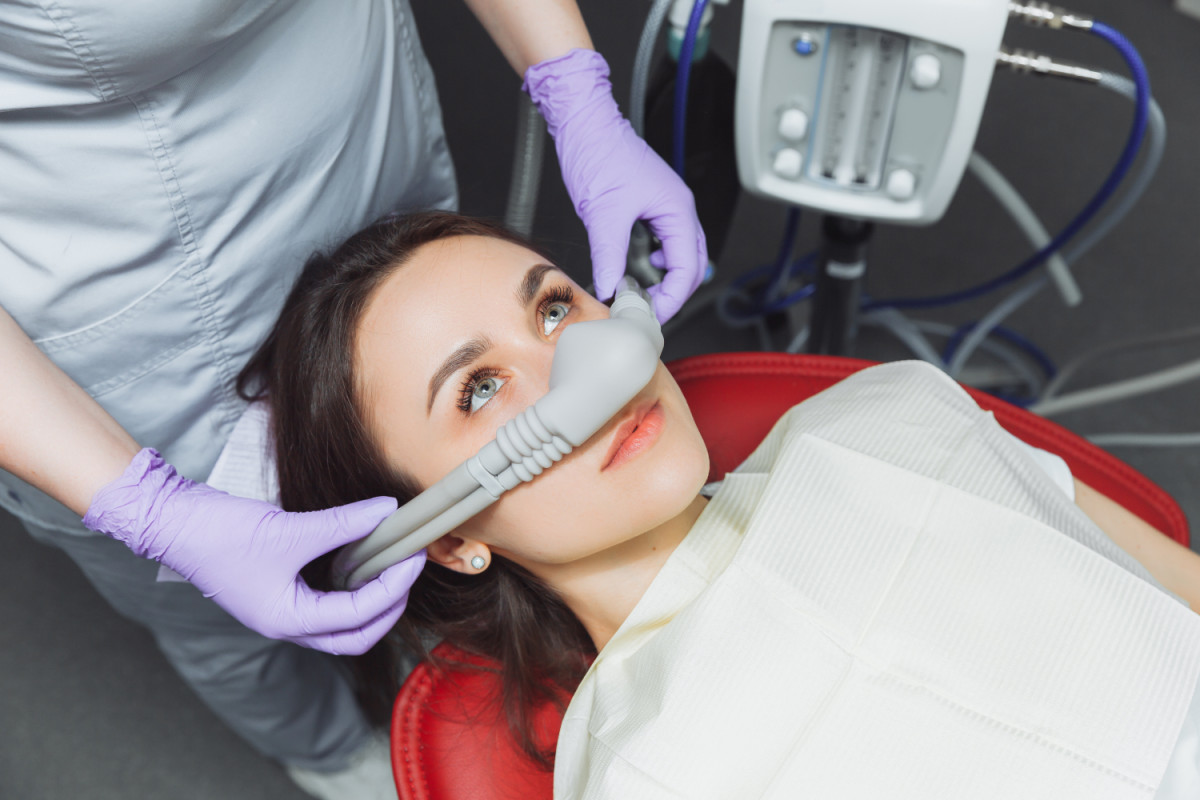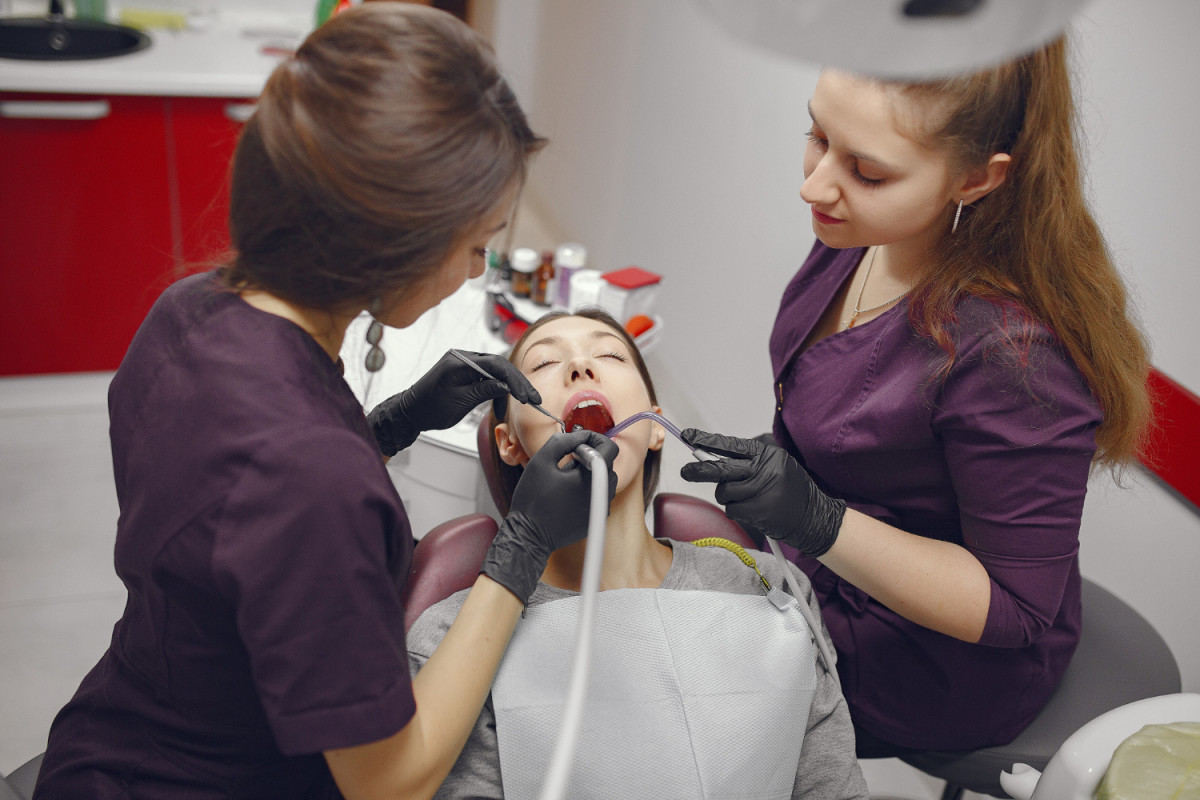Fear-Free Dentistry: How Conscious Sedation Makes Dental Visits Easier
Alexandria, United States - June 12, 2025 / Ridgetop Dental /
For many people, a visit to the dentist can feel overwhelming. Whether it’s due to past experiences, fear of pain, or general anxiety, dental care can often be delayed or avoided altogether. At Ridgetop Dental, we believe that no one should miss out on essential oral health because of fear. That’s why we offer conscious sedation in dentistry—a safe and effective way to help you relax and receive care in comfort, all while maintaining a high standard of patient safety.
Table of Contents
What Is Conscious Sedation in Dentistry?
Conscious sedation is a technique used to help patients feel calm and at ease during dental procedures. Unlike general anesthesia, it keeps you awake and responsive—but deeply relaxed. You may feel drowsy and not remember much afterward, which can be especially helpful for patients with dental anxiety.
According to the American Dental Association (ADA), conscious sedation is widely recognized as a safe and effective tool for managing fear and discomfort in dental care. Some procedures may specifically involve oral conscious sedation, which provides targeted relief using sedative pills.
Who Can Benefit from Conscious Sedation?
This approach is ideal for individuals who:
Experience moderate to severe dental anxiety
Have a low pain threshold
Suffer from a strong gag reflex
Need complex or lengthy procedures
Have had traumatic dental experiences
Have special needs or difficulty sitting still
Types of Conscious Sedation Used in Dentistry

There are several types of sedation depending on your comfort level and treatment needs:
1. Nitrous Oxide (Laughing Gas)
A mild sedative inhaled through a mask. It takes effect quickly and wears off just as fast, allowing you to resume your day without lingering drowsiness. This is considered a safe option for adults and children alike.
2. Oral Sedation / Oral Conscious Sedation
Taken in pill form before your appointment, oral sedation—including protocols that involve oral conscious sedation—helps you feel calm and may make you feel sleepy. Often, medications such as benzodiazepines are used in controlled doses to achieve the desired level of relaxation. You’ll still be conscious and able to respond, but much more at ease throughout the procedure.
3. IV Sedation / Deep Sedation
Administered through a vein for a deeper level of sedation, IV sedation—sometimes referred to as deep sedation—is best for longer or more invasive procedures. You remain awake but deeply relaxed, with little to no memory of the treatment. All deep sedation is closely monitored by trained professionals.
How Conscious Sedation Works in the Body
Conscious sedation works by depressing the central nervous system just enough to reduce awareness of pain and anxiety, while still allowing the patient to breathe independently and respond to verbal cues. The specific effects depend on the type and dosage of sedative used. For example, benzodiazepines have both anxiolytic (anxiety-reducing) and amnesic effects, which help patients feel calm and remember little of the procedure. The level of sedation can range from minimal (relaxed but fully alert) to moderate (drowsy but responsive), depending on the clinical needs.
The Difference Between Sedation Levels
It’s important to distinguish between the different levels of sedation used in dentistry. Minimal sedation reduces anxiety while the patient remains fully awake. Moderate sedation (often the goal of conscious sedation) induces a state where the patient may slur words and not remember much but can still respond to touch or verbal commands. Deep sedation borders on unconsciousness and is not typically categorized as conscious sedation. Understanding these levels helps patients make informed decisions about the type of sedation best suited to their comfort and procedure complexity.
Regulations and Training for Dental Sedation
The use of sedation in dentistry is highly regulated to ensure patient safety. In the United States, each state dental board sets specific guidelines for certification, equipment, and emergency preparedness. Dentists must undergo specialized training and often need to complete continuing education to maintain their qualifications. Additionally, facilities must be equipped with monitoring equipment, such as pulse oximeters and blood pressure monitors, and follow strict protocols for emergency response. These safety measures are in place to give patients peace of mind and a secure, controlled experience during sedation.
Is Conscious Sedation Safe?
Yes—conscious sedation is very safe when delivered by trained dental professionals. At Ridgetop Dental, we follow rigorous safety protocols and focus heavily on patient safety, monitoring your vital signs throughout your procedure.
Before recommending sedation, we conduct a thorough review of your medical history, current medications, and any prior experiences to customize a plan that keeps you safe and comfortable.
What to Expect During a Sedated Appointment
Here’s a quick breakdown of how the process works:
Consultation – A dental professional will review your health history and discuss the best sedation option for you, whether that involves oral conscious sedation, benzodiazepines, or deep sedation.
Preparation – On the day of your visit, you’ll receive your sedative, and will be guided through the entire process.
During Treatment – You’ll feel relaxed, and though you’re awake, you may not remember much afterward.
Aftercare – Depending on the sedation used, you might need someone to drive you home. Nitrous oxide wears off quickly; oral sedation and deep sedation typically require a bit more recovery time.
Benefits of Conscious Sedation
Conscious sedation helps patients receive the care they need without the fear. Benefits include:
Lowered anxiety before and during treatment
Minimal or no memory of the procedure
Reduced discomfort during long or complex dental work
Ability to complete multiple treatments in one visit
Improved experience for patients with special needs
Enhanced patient safety with every procedure
Frequently Asked Questions
Q: Is conscious sedation the same as general anesthesia? No. Conscious sedation, including options like oral conscious sedation and deep sedation, keeps you relaxed while you stay awake and responsive. General anesthesia renders you completely unconscious and is used in hospital settings.
Q: Is it covered by dental insurance? Coverage varies. Some plans include sedation for specific procedures or if medically necessary.
Q: How long does it take to recover? Nitrous oxide wears off in minutes, while oral sedation and deep sedation may take several hours. Plan for a restful day afterward if you’re receiving a deeper level of sedation.
Q: Can children be sedated? Yes, especially with nitrous oxide. The American Academy of Pediatric Dentistry supports its safe use in pediatric dental care, always ensuring strict protocols that uphold patient safety.
Take the First Step Toward Stress-Free Dental Care
Your comfort matters. If fear has kept you from getting the dental care you need, contact us today to schedule a consultation. Our compassionate team at Ridgetop Dental is here to help you feel safe, supported, and confident about your smile—every step of the way.

Contact Information:
Ridgetop Dental
6481 Old Beulah St
Alexandria, VA 22315
United States
Datta Malyavantham
(703) 997-6073
https://ridgetopdental.com/alexandria


